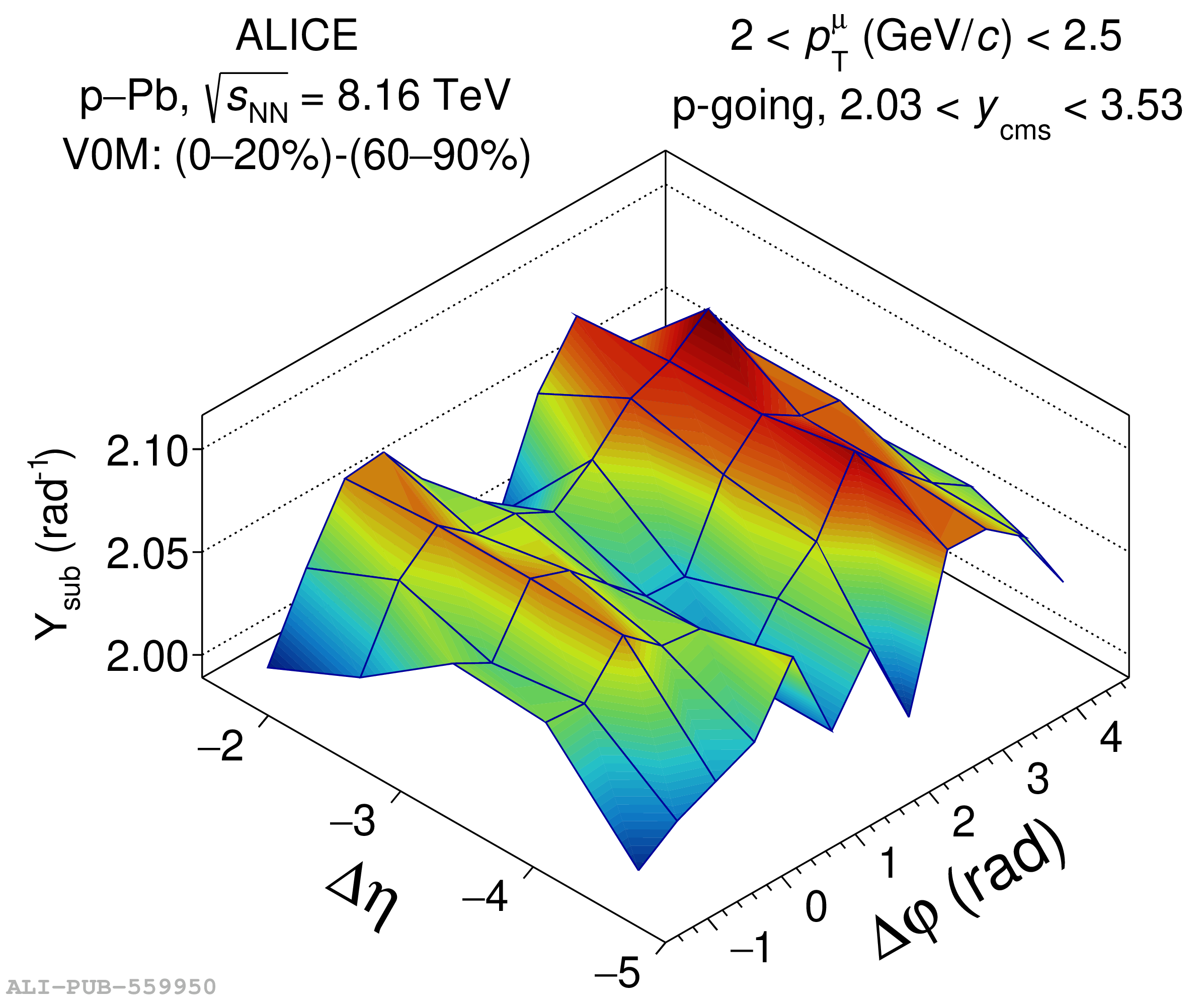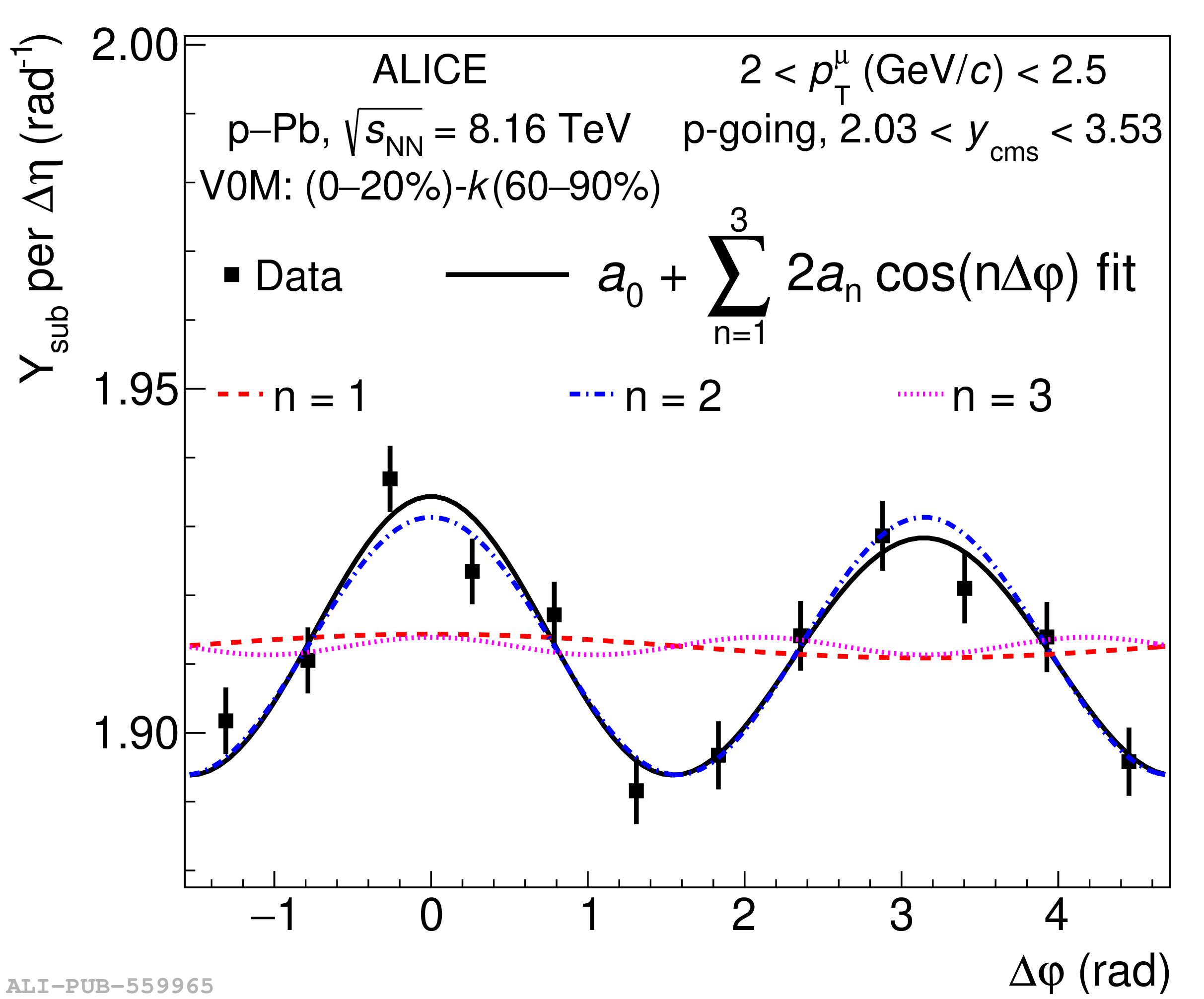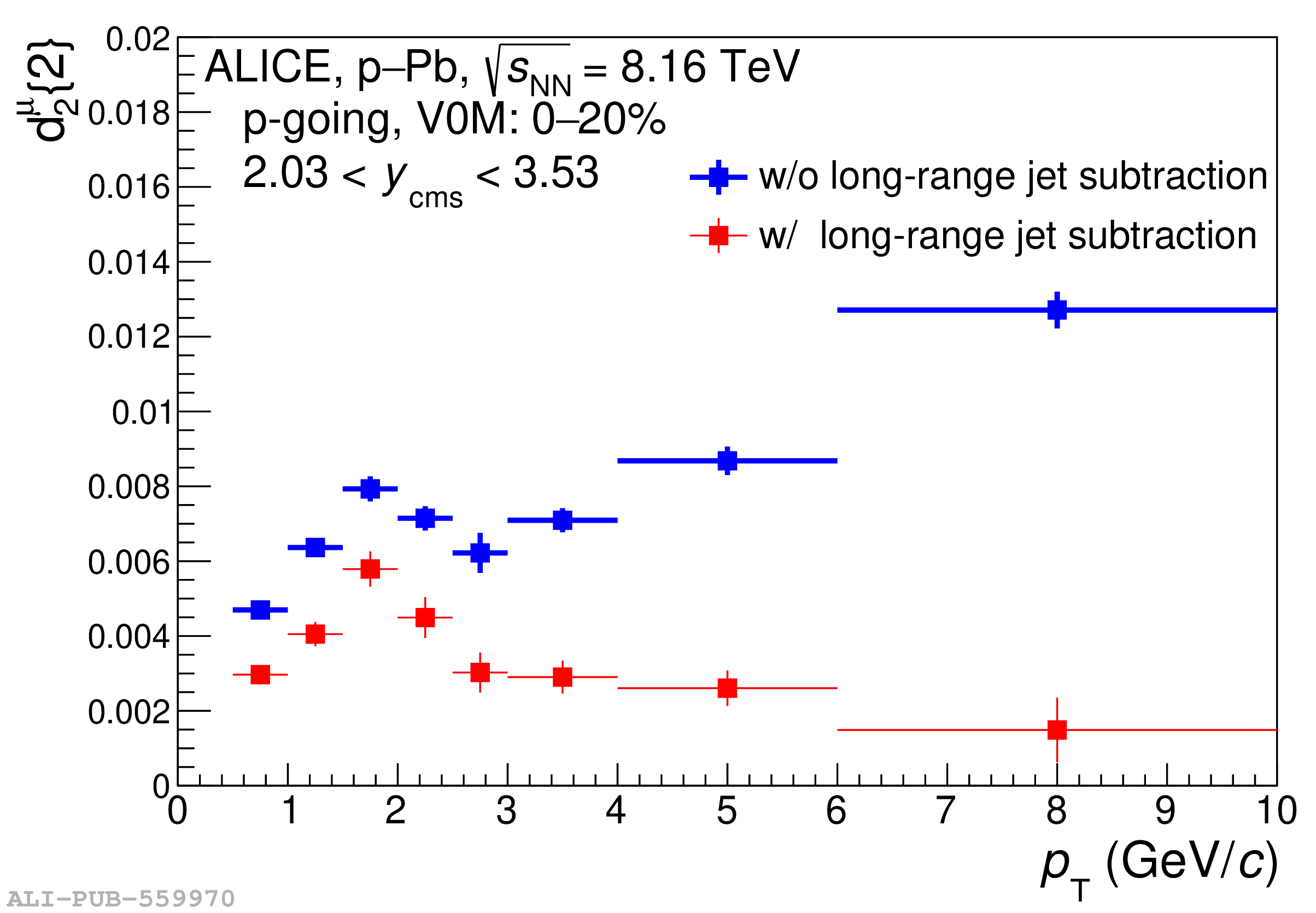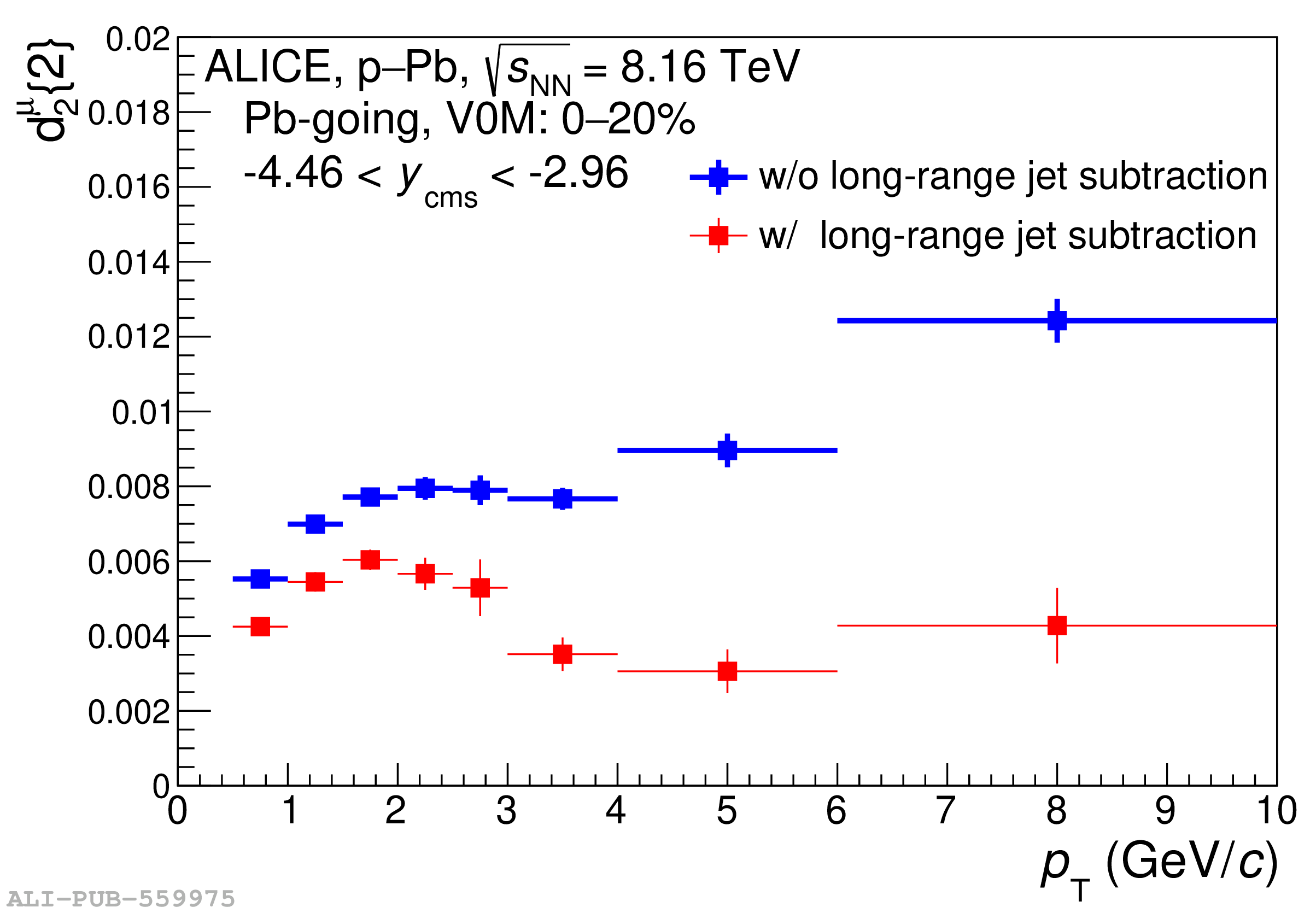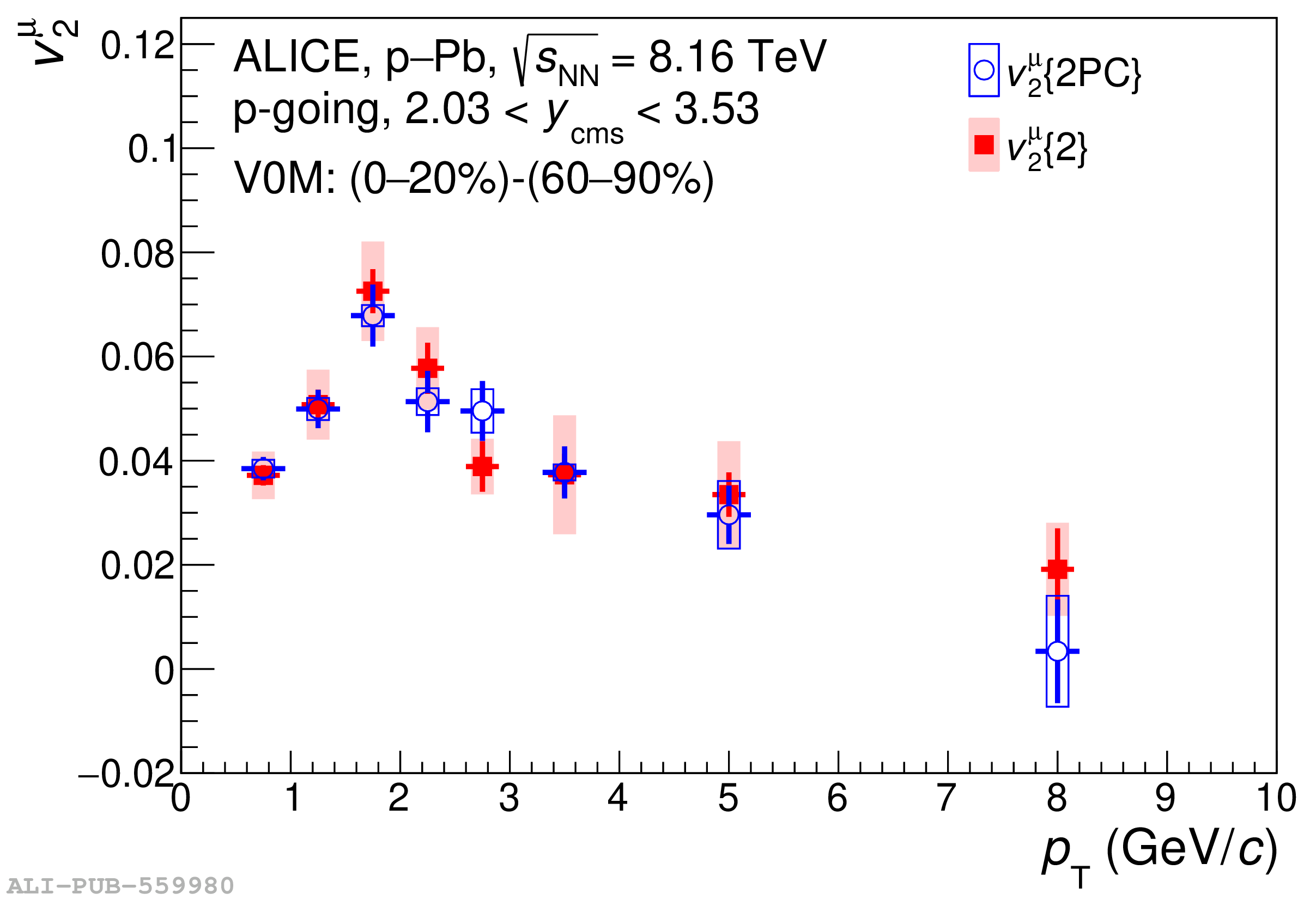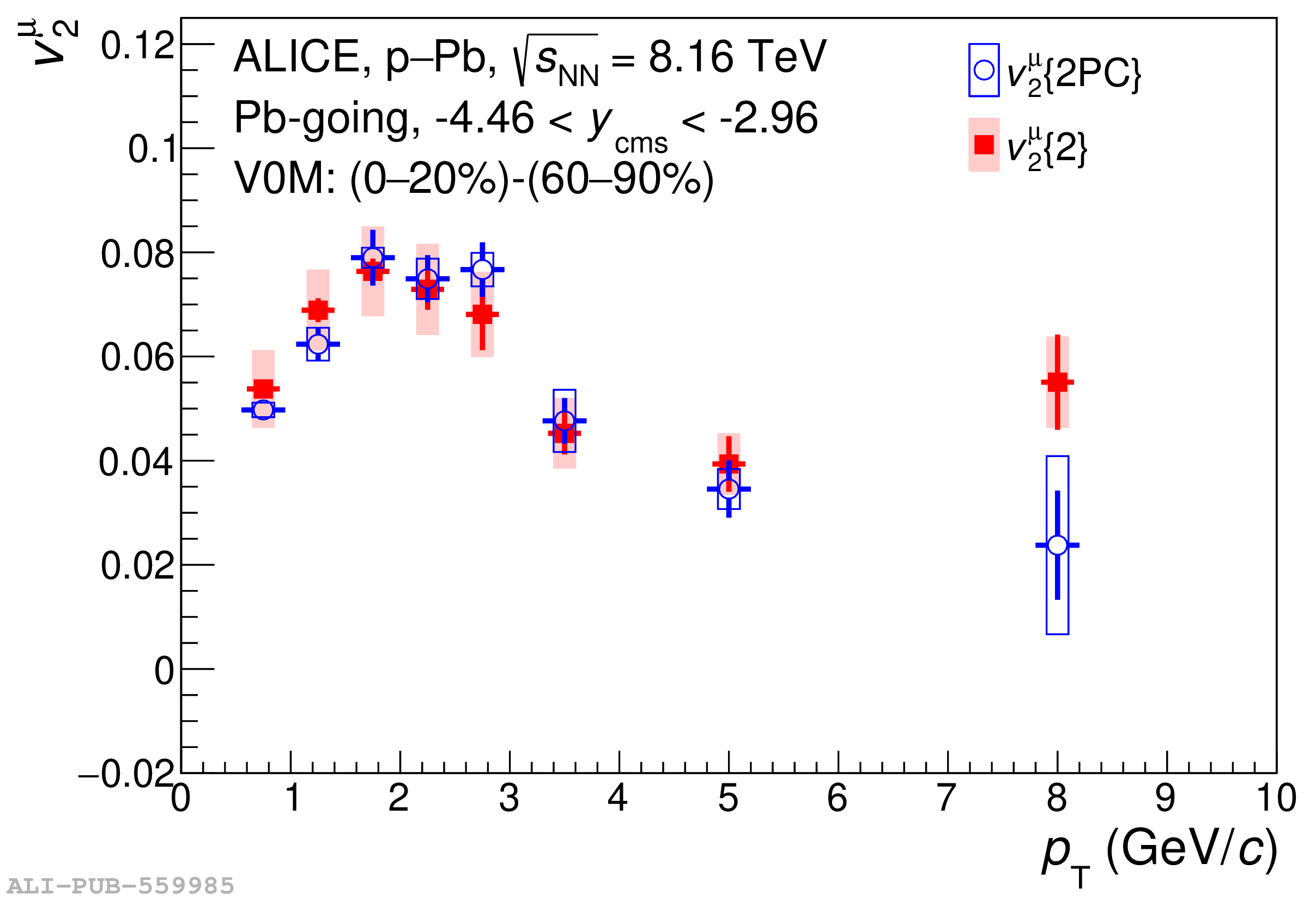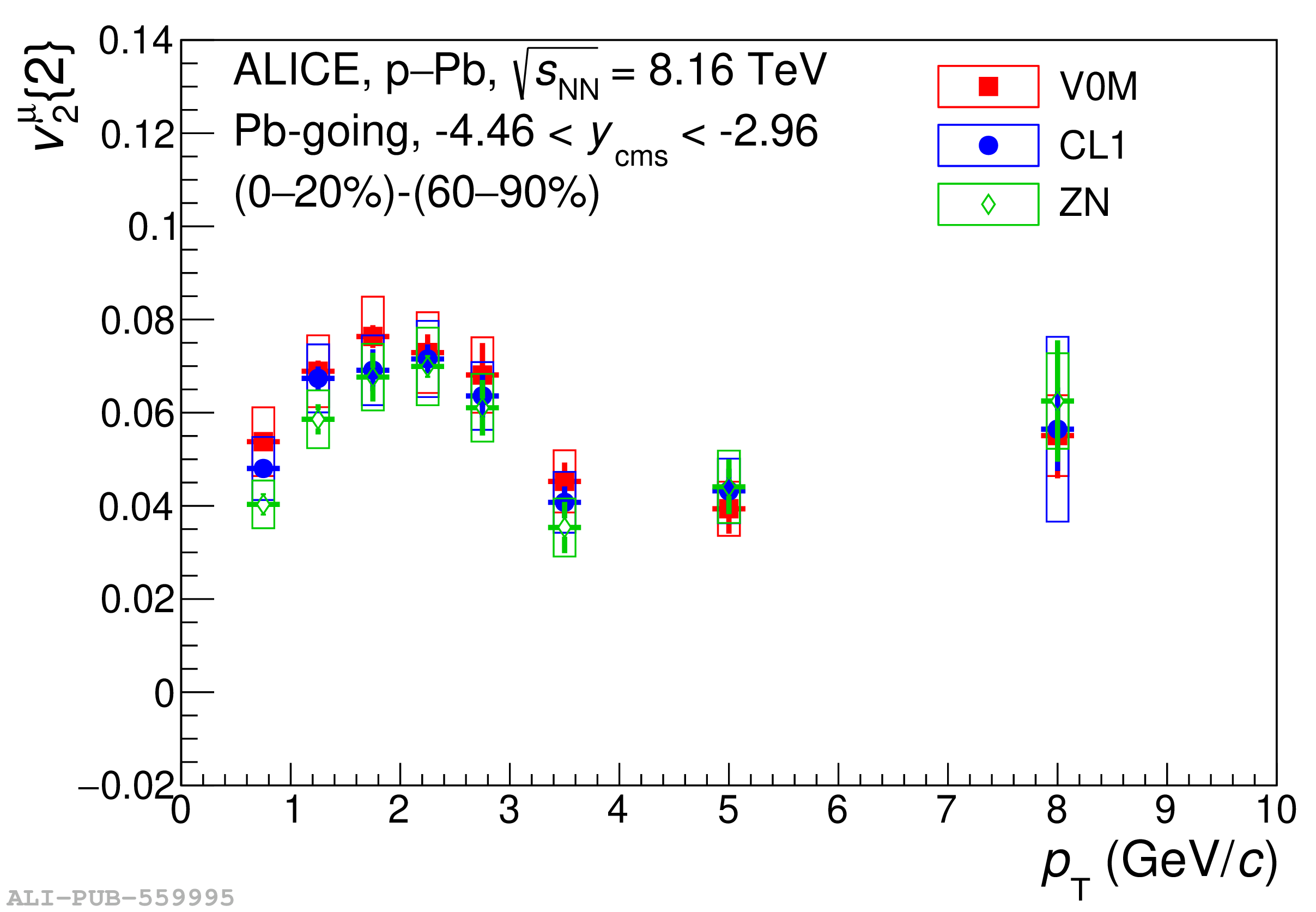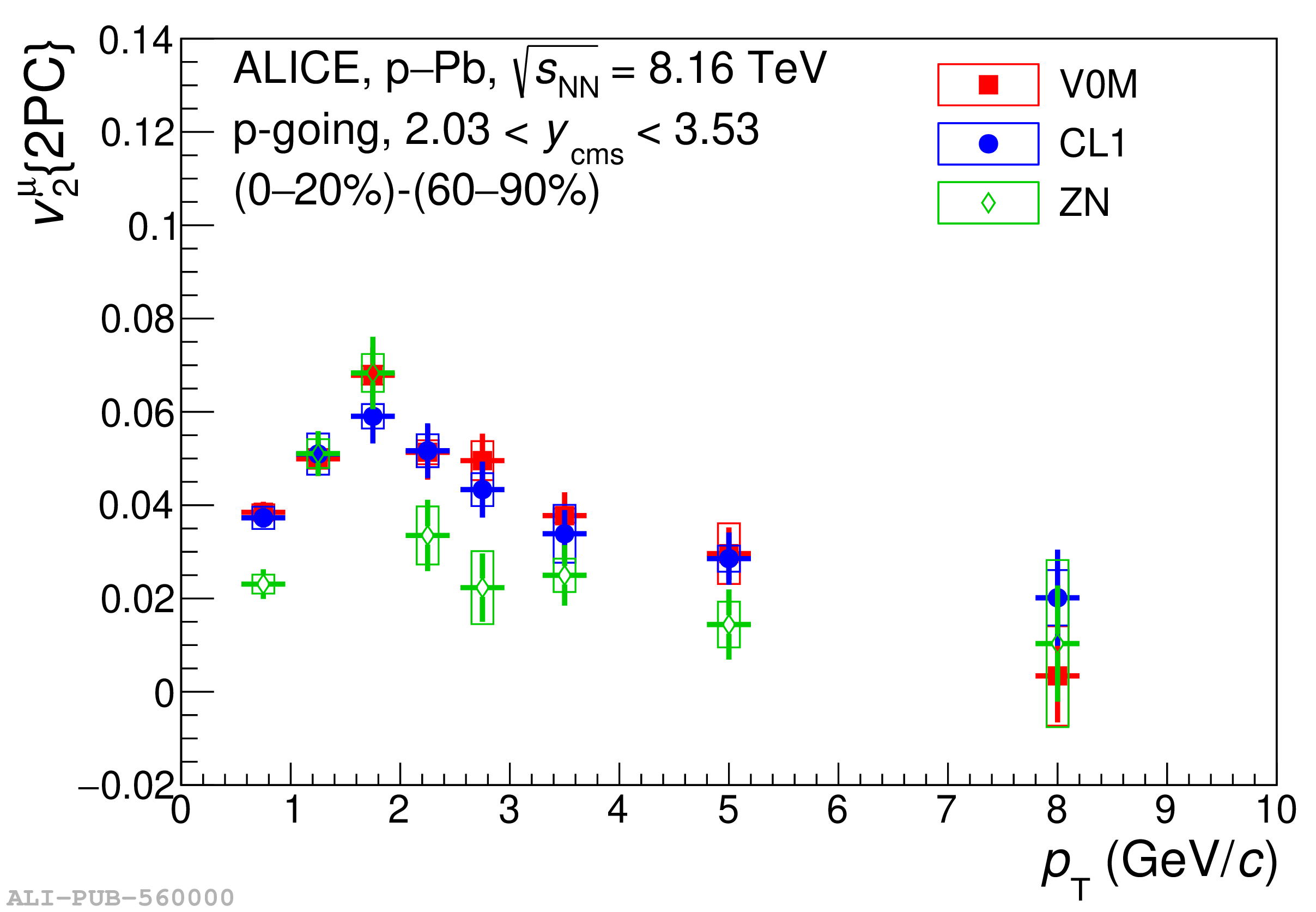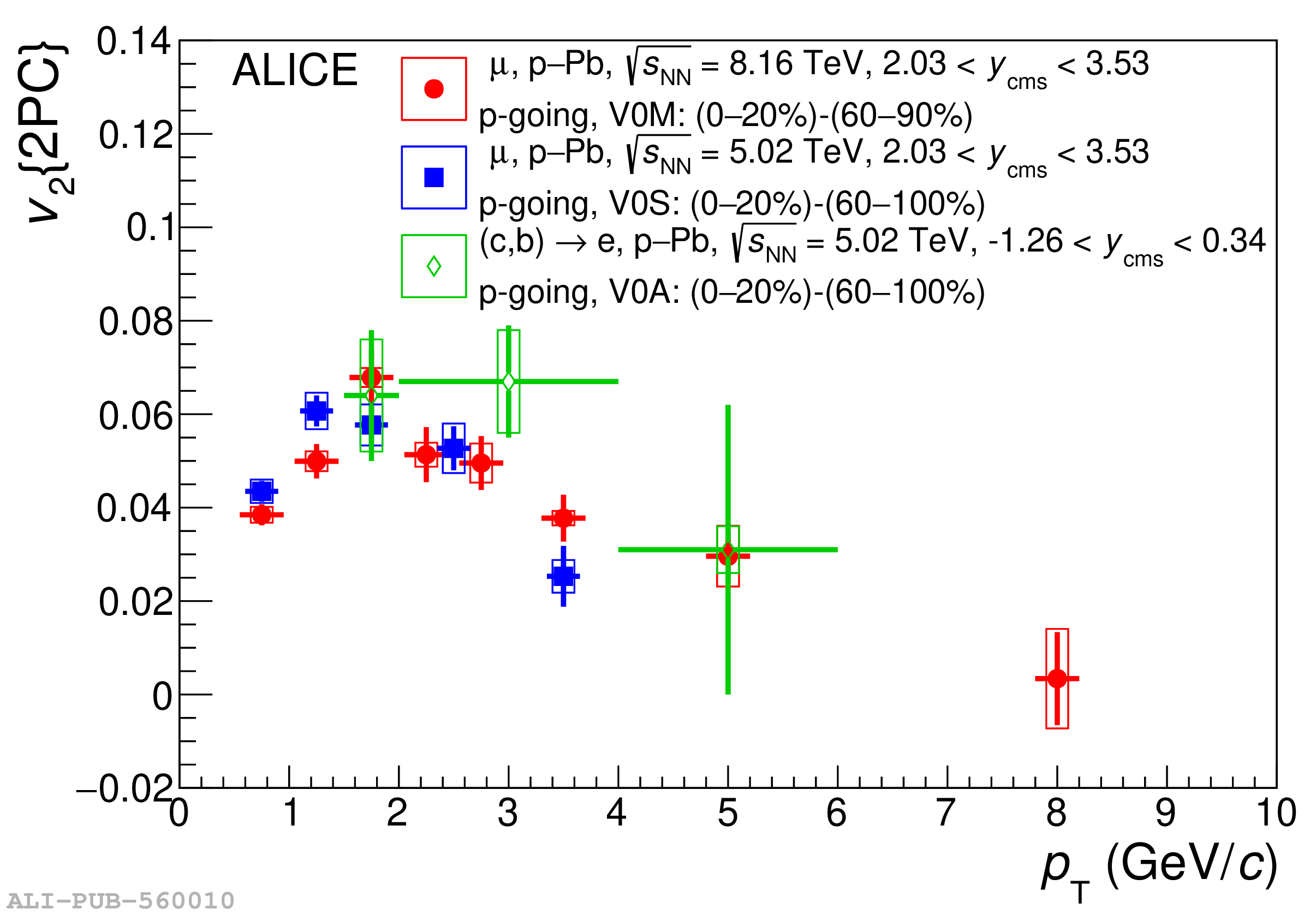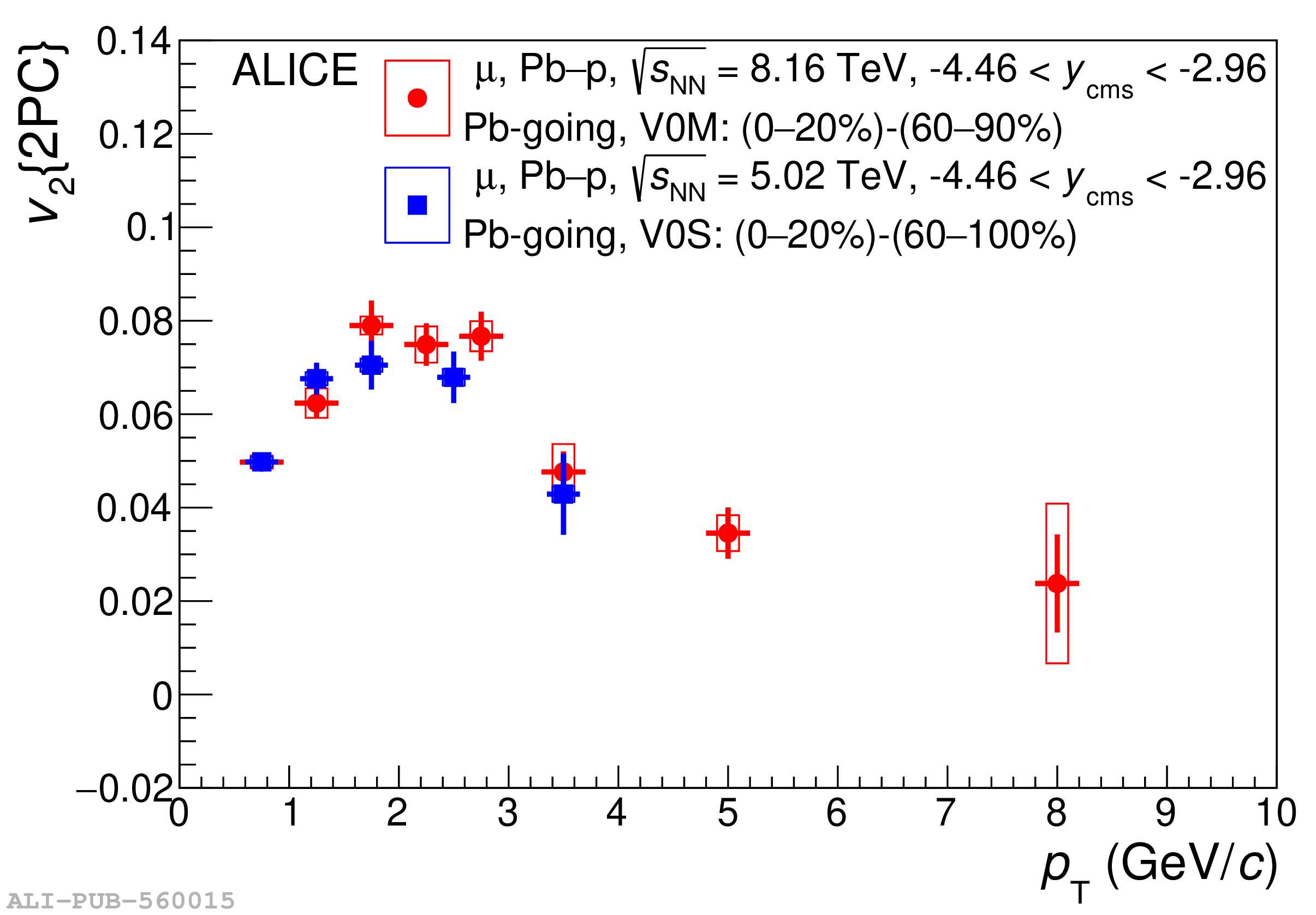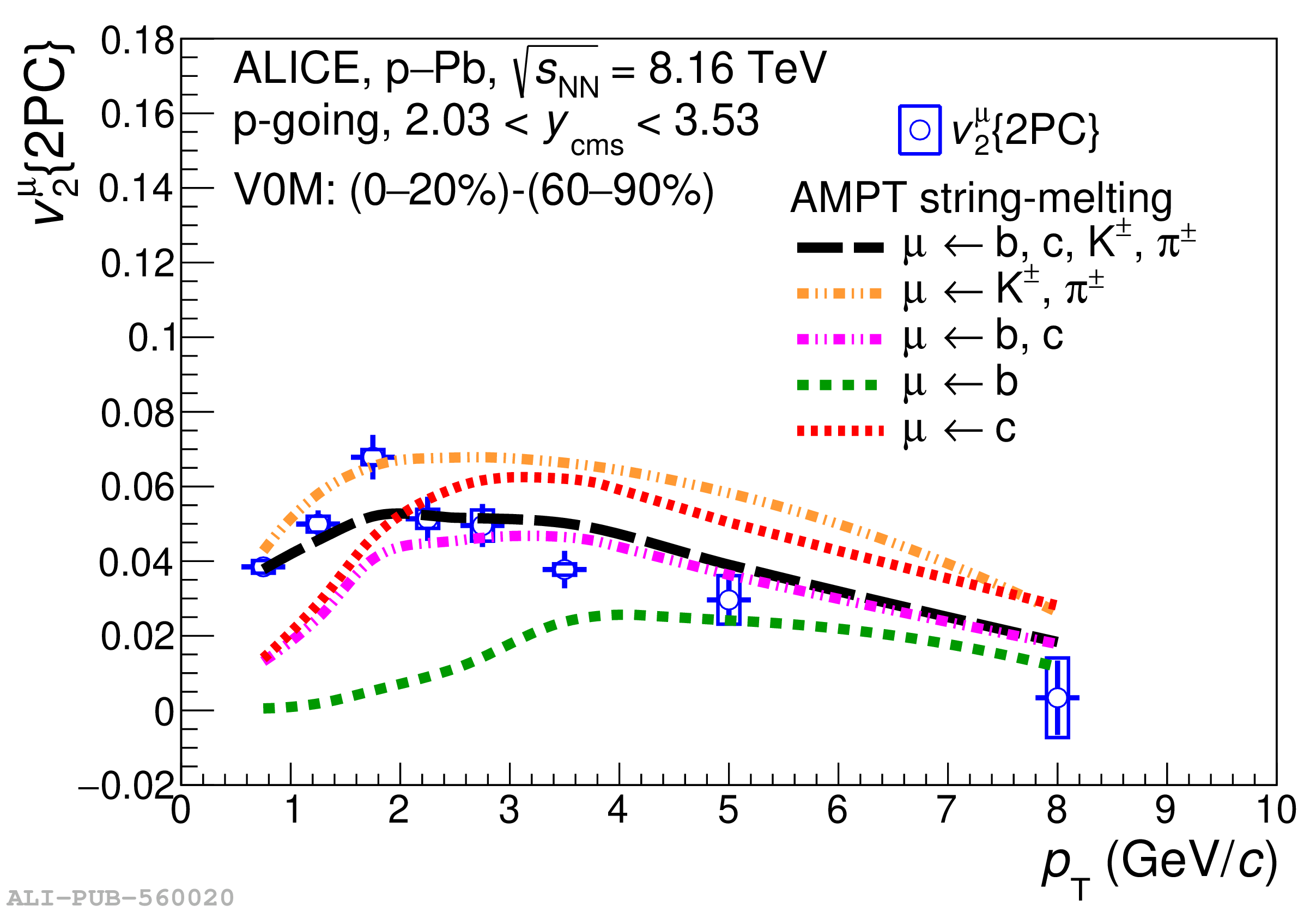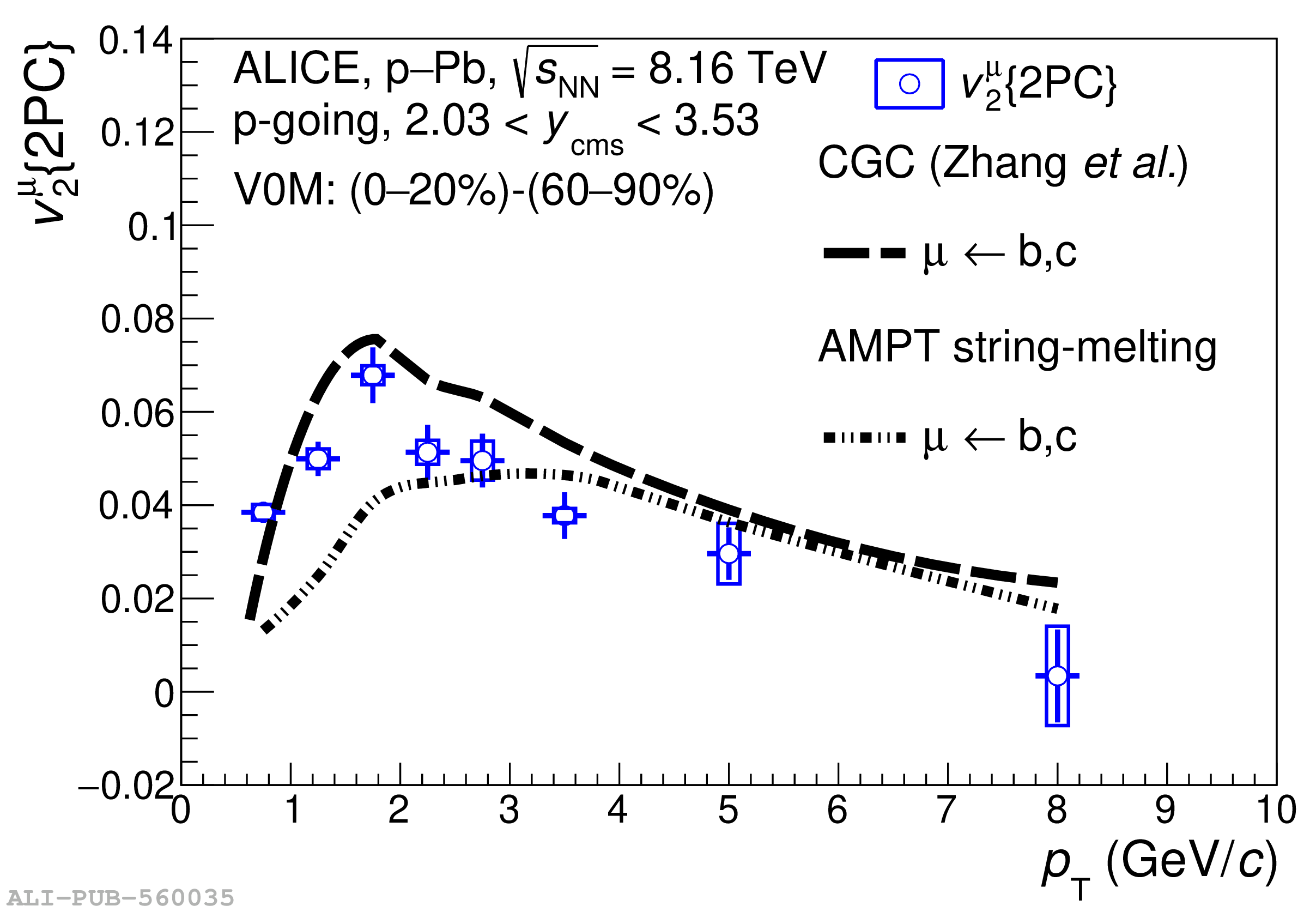The study of the azimuthal anisotropy of inclusive muons produced in p-Pb collisions at $\sqrt{s_{\rm NN}} = 8.16$ TeV, using the ALICE detector at the LHC is reported. The measurement of the second-order Fourier coefficient of the particle azimuthal distribution, $v_2$, is performed as a function of transverse momentum $p_{\rm T}$ in the 0-20% high-multiplicity interval at both forward ($2.03 <~ y_{\rm CMS} <~ 3.53$) and backward ($-4.46 <~ y_{\rm CMS} <~ -2.96$) rapidities over a wide $p_{\rm T}$ range, $0.5 <~ p_{\rm T} <~ 10$ GeV/$c$, in which a dominant contribution of muons from heavy-flavour hadron decays is expected at $p_{\rm T} > 2$ GeV/$c$. The $v_2$ coefficient of inclusive muons is extracted using two different techniques, namely two-particle cumulants, used for the first time for heavy-flavour measurements, and forward-central two-particle correlations. Both techniques give compatible results. A positive $v_2$ is measured at both forward and backward rapidities with a significance larger than $4.7\sigma$ and $7.6\sigma$, respectively, in the interval $2 <~ p_{\rm T} <~ 6$ GeV/$c$. Comparisons with previous measurements in p-Pb collisions at $\sqrt{s_{\rm NN}} = 5.02$ TeV, and with AMPT and CGC-based theoretical calculations are discussed. The findings impose new constraints on the theoretical interpretations of the origin of the collective behaviour in small collision systems.
Phys. Lett. B 846 (2023) 137782
HEP Data
e-Print: arXiv:2210.08980 | PDF | inSPIRE
CERN-EP-2022-209
Figure group

